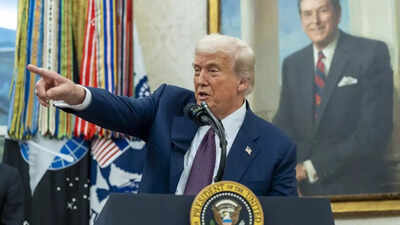Trump Confirms US Will Resume Nuclear Weapons Testing
President Donald Trump has confirmed the United States will resume nuclear weapons testing, stating if other countries conduct tests, “we’re going to do it.” The announcement signals a potential end to decades of nuclear testing moratorium and could reignite global arms race tensions.
Key Takeaways
- Trump directs Pentagon to resume nuclear testing after decades-long pause
- Underground tests potentially on the table, though details remain unclear
- Move justified as response to testing by other nations including Russia and China
- Decision could cost $140 million per test and spark new arms race
“You’ll Find Out Very Soon”: Trump’s Announcement
Speaking to reporters aboard Air Force One, President Trump reaffirmed his administration’s plans to restart nuclear weapons testing. When questioned about including traditional underground tests common during the Cold War, he responded: “You’ll find out very soon. But we’re going to do some testing, yeah.”
Trump justified the decision by pointing to other nations’ activities: “Other countries do it. If they’re going to do it, we’re going to do it.”
“The United States has more Nuclear Weapons than any other country. This was accomplished, including a complete update and renovation of existing weapons, during my First Term in office. Because of the tremendous destructive power, I HATED to do it, but had no choice!” – President Trump on Truth Social
Timing and International Context
The testing announcement came shortly before Trump’s meeting with Chinese President Xi Jinping in South Korea. When asked if the decision related to Xi, Trump stated it “had to do with others” who “seem to all be nuclear testing.”
North Korea remains the only country that has conducted actual nuclear testing since the 1990s, while Russia has tested nuclear-capable weapons without detonating bombs. North Korean leader Kim Jong Un has recently tested missiles capable of carrying nuclear warheads.
History of US Nuclear Testing
The United States conducted 1,054 nuclear tests between 1945 and 1992, primarily in Nevada, before halting due to environmental concerns and Cold War fatigue.
Key milestones in nuclear testing regulation:
- 1963: Partial Nuclear Test Ban Treaty prohibited tests in atmosphere, space, and underwater
- 1974: Threshold Test Ban Treaty limited underground tests to under 150 kilotons
- 1992: Congressional resolution established current testing moratorium
- 1997: US signed but never ratified Comprehensive Test Ban Treaty
Globally, 187 countries have signed the CTBT with 178 ratifications as of August 2025.
Potential Consequences and Reactions
The US never ratified the Comprehensive Test Ban Treaty, leaving Trump legally free to resume testing. However, the decision has drawn sharp criticism from multiple fronts.
Nevada lawmakers, whose state hosted hundreds of tests, condemned the plan as both a public health hazard and geopolitical provocation that could “lead to World War III.”
Experts question the technical necessity, noting the US already certifies its nuclear arsenal through advanced simulations. Each new test could cost approximately $140 million while risking renewed global tensions.
While Trump allies argue testing would project strength to China and Russia, analysts warn it could alienate US allies, undermine nuclear restraint, and spark a new arms race as key arms control treaties near expiration.




